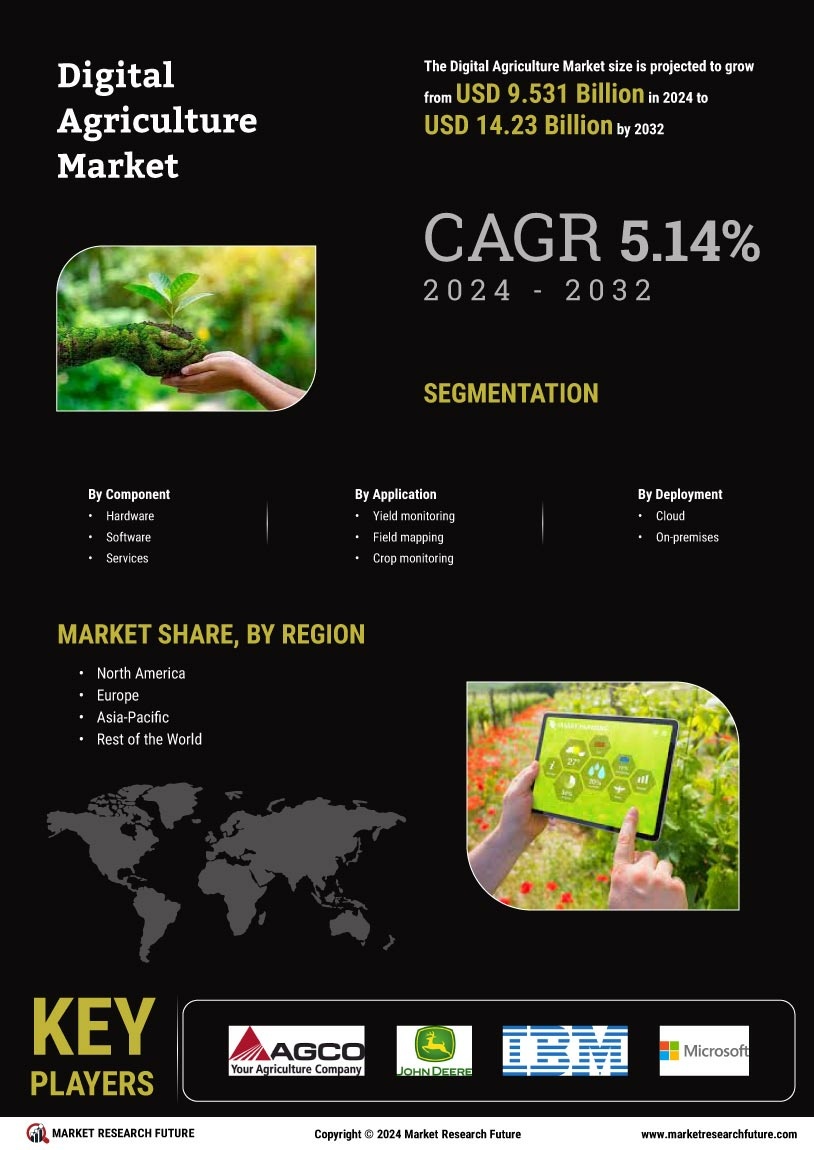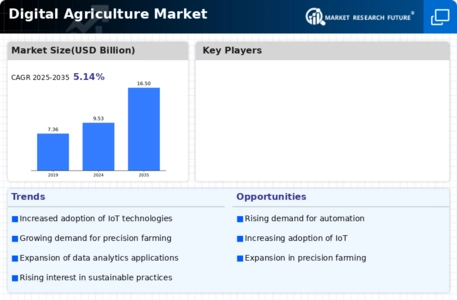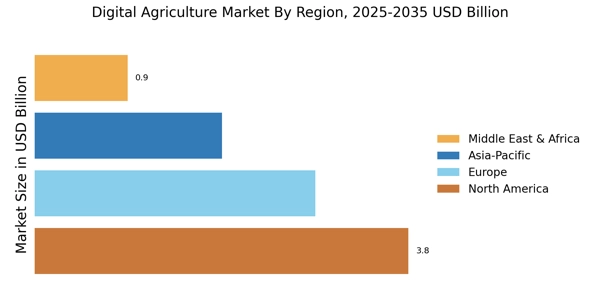Rising Demand for Food Security
The growing global population is intensifying the need for food security, thereby propelling the Digital Agriculture Market. With projections indicating that the world population may reach 9.7 billion by 2050, the pressure on agricultural systems is mounting. Digital agriculture solutions, such as precision farming and data analytics, are essential in maximizing crop production while minimizing environmental impact. The market for digital agriculture is expected to expand significantly, with estimates suggesting a compound annual growth rate of over 12% in the coming years. This demand for sustainable food production methods is a key driver for the Digital Agriculture Market.
Government Initiatives and Support
Government initiatives aimed at promoting sustainable agricultural practices are playing a crucial role in the Digital Agriculture Market. Various countries are implementing policies that encourage the adoption of digital technologies in farming. For example, subsidies for precision agriculture tools and funding for research in agricultural technology are becoming more common. These initiatives not only support farmers in transitioning to digital solutions but also aim to enhance food security and environmental sustainability. As a result, the Digital Agriculture Market is likely to benefit from increased investment and support from governmental bodies, fostering innovation and growth.
Environmental Sustainability Concerns
Concerns regarding environmental sustainability are increasingly influencing the Digital Agriculture Market. Farmers are under pressure to adopt practices that reduce carbon footprints and conserve natural resources. Digital agriculture technologies, such as soil sensors and water management systems, enable farmers to monitor and manage their environmental impact effectively. The market is witnessing a shift towards sustainable practices, with many farmers recognizing that digital solutions can lead to both economic and environmental benefits. This growing awareness is expected to drive the Digital Agriculture Market forward, as more stakeholders seek to align with sustainability goals.
Technological Advancements in Agriculture
The Digital Agriculture Market is experiencing a surge in technological advancements that enhance farming efficiency and productivity. Innovations such as drones, IoT devices, and AI-driven analytics are transforming traditional farming practices. For instance, the integration of precision agriculture technologies is projected to increase crop yields by up to 20%. This shift towards technology-driven solutions is not merely a trend; it is becoming a necessity for farmers aiming to optimize resource use and reduce operational costs. As these technologies become more accessible, the Digital Agriculture Market is likely to witness accelerated growth, driven by the demand for smarter farming solutions.
Increased Investment in Agricultural Technology
Investment in agricultural technology is a significant driver of the Digital Agriculture Market. Venture capital and private equity firms are increasingly recognizing the potential of digital solutions in agriculture. Reports indicate that investments in agtech startups have surged, with funding reaching billions of dollars annually. This influx of capital is facilitating the development of innovative technologies that enhance productivity and efficiency in farming. As investors continue to support advancements in digital agriculture, the market is poised for substantial growth, reflecting a broader trend towards modernization in the agricultural sector.


















Leave a Comment